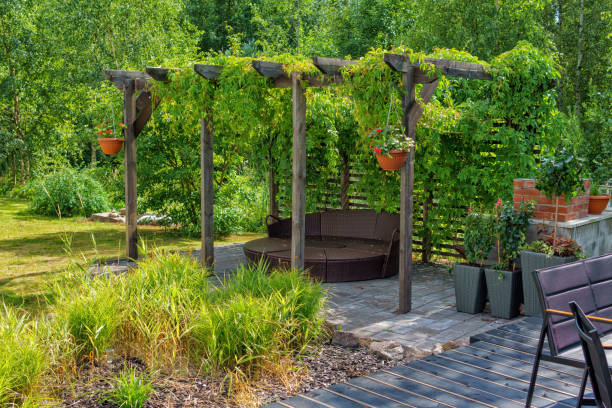Deck gardening is a great way to get started, even if you don’t have the space or want to do all the work.
My favorite way to garden is by growing plants in containers outside on my deck. Containers are easy to use and allow you to keep an eye on the plants.
You don’t need a yard to grow vegetables.
You can grow herbs and vegetables even living on the top floor. Tomatoes, cucumbers, and potatoes grow well on a balcony or deck. The yields can be lower but still very productive.
Why grow edibles on your patio or deck?
Do you live somewhere cloudy where the light can be a problem? Sometimes, an elevated space will provide more light.
Pests such as slugs and snails are less likely in your garden.
You can grow plants in a medium that is free of weed seed. Some weeds will find their way onto your deck due to wind or birds.
It’s easier to estimate the amount of water needed for container-grown vegetables. This will save water over time.
Keep some containers of herbs near your kitchen, even if most of your plants are grown in the ground. You can enhance your meals with fresh herbs by simply walking outside to grab a few sprigs.
How to Plan a Deck Garden
The roots of plants grow stronger when they are in larger containers. Up-cycling is a great way to reuse wine boxes and food storage containers. Ensure that the container is food safe and not treated with chemicals.
Use cedar or fiberglass planters for something durable and stylish that will last years. Terra-cotta or ceramic planters are attractive and affordable but can crack when the weather is freezing. Make sure that your container has adequate drainage.
Considerations
Use a lightweight container potting mix and never garden soil. You can either buy the best organic compound or make your own. You can use one without peat because it is a non-renewable resource.
Vegetables require a lot of fertilizer. When you plant your containers, add a slow-release organic granular fertilizer. Then, follow up monthly with organic liquid fertilizer specially formulated for vegetables.
The balconies of high-rise apartments can be subjected to wind, heavy rains, and extreme heat. Use patio umbrellas, glass railings, and roof overhangs to protect plants. Rolling planters can be moved when needed. Use clear plastic clamshells from commercial products such as salad mixes to protect young plants against storms. You can make mini-hoop covers using clear plastic wrap and sturdy wire.
Worm Composting
Under the kitchen sink, you can set up a compost bin to create your fertilizer. Recycling kitchen waste and making fertilizer is an easy, odorless method. The worm compost and worm tea, the liquid produced during the worm-composting procedure, will keep your plants healthy.
What to Grow
Containers are a great way to grow a variety of vegetables and fruits.
Tomatoes will grow well in the heat on a deck or balcony. Use a container at least 18” profound, and provide a support trellis if needed.
The potatoes grow well in pots. They don’t need as much digging, which could result in you cutting the potatoes in half with a shovel. When ready to harvest, tip the container on a tarp. Plant potatoes in a large container or Herbs make an excellent choice for deck or patio gardens. You can quickly harvest herbs from your deck or patio by placing them near the kitchen. Herbs thrive in containers and love the sun and heat from a balcony. Mint and other invasive plants can also be controlled.
Salad Greens thrive in containers because of their small roots. To ensure a constant supply, scatter seeds thinly every week and harvest them as soon as possible. Clipping the sources can give you a second or even a third harvest.
Considerations
Container gardens that fail are often due to overcrowding. Plants in containers have less space for their roots to grow than those in raised beds or the ground. Large crops like tomatoes, cucumbers, and kale need lots of room. Use only one plant in each pot at least 18 inches high. Salad greens should be sown sparingly, and seedlings thinned often.
Container plants need more frequent irrigation than other types of crops. Keep your potting soil moist but not soggy. The top can dry out in the afternoon, but the bottom should remain moist. It may be necessary to water twice daily or daily. Watering in the morning is best. Install an automated irrigation system for containers if you lead a busy life.
Vegetables eat a lot. At planting time, sprinkle organic slow-release fertilizer granules on the soil. Follow up monthly with an organic liquid vegetable fertilizer.



